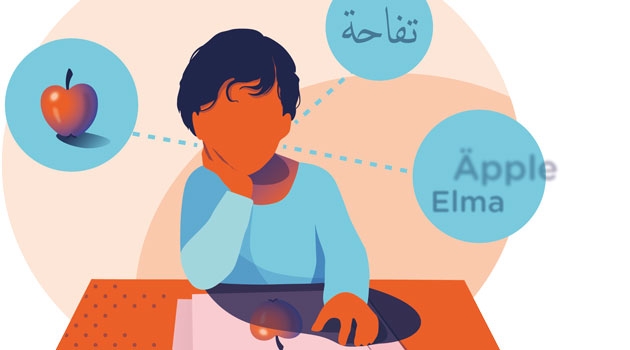“Not all multilingual children are alike”
Multilingualism among children is becoming more common, but we need to know more about how it affects language development. What language should be spoken at home – the mother tongue or the new language? And why are so many multilingual children examined for language disorders?
Ute Bohnacker, Professor of Linguistics and Philology, and her research team are part of the EU network COST Action ISO804, in a project involving linguists, speech therapists and child psychologists. They have prepared test materials to measure and compare children’s proficiency in different languages – such as vocabulary, pronunciation and the ability to tell a story.
“There are no good language tests in Sweden for this age group that are adapted to multilingualism,” says Ute Bohnacker. “We need materials that actually work and aren’t a direct translation from English or developed for adults.”
Here at the Department of Linguistics, a project is under way in which over 200 bilingual children aged 4–7 have been tested in Swedish and Arabic or Turkish. It is a cross-sectional study involving preschool children in eastern central Sweden.
The project is being conducted by doctoral students Linnéa Öberg and Rima Haddad. They are using a series of images that the children can talk about, for example, to test their proficiency in both of the languages.
“We also ask the parents in a questionnaire about what language exposure the children receive, how much each language is spoken daily, in school, what books they read and if they receive mother tongue instruction. What language do the children speak with siblings, with adults, what language do the adults speak? There are many aspects and with this information, we can better interpret the children’s results,” says Öberg.
Haddad, who tests the children’s knowledge of Arabic, has worked hard to include all of the different Arabic dialects.
“The word test has been developed by Lebanese researchers, but here in Sweden there is a broad Arabic-speaking population that comes from various countries, so we have adapted it so that the children recognise the words.”
Another part of the study is about children of the same age with the language combination Swedish–Turkish. Doctoral student Buket Öztekin has also combined language tests and questionnaires.
“I’ve looked at links between language use at home, exposure to the language and vocabulary. For example, I saw that if the parents only spoke the mother tongue with the children, the children had a larger vocabulary than if the parents sometimes spoke Swedish and sometimes Turkish.”
In the study of Swedish–Arabic children as well, it has become clear that it is important to speak one’s mother tongue with the children and not just the new language.
“Our preliminary data show that if the parents speak mostly Arabic at home, the children’s understanding and production of language will improve. Their results in Arabic are better than those whose parents don’t speak Arabic. But what we have noticed is that their Swedish is not negatively impacted so it doesn’t affect their proficiency in Swedish,” says Haddad.
Another objective of the research is to find out why such a large percentage of the multilingual children are examined for language disorders. Internationally, multilingual children as a group are overrepresented in special needs schools and in diagnoses of language disorders.
So besides the large-scale studies of many children, more in-depth studies are being made of some of the children, who will be monitored for several years.
“Some characteristics of multilingualism or second-language learning seem somewhat similar to what is said to be a marker for language disorders. We want to make it easier to diagnose language disorders so that children are not incorrectly diagnosed,” says Bohnacker.
There are ways to equalise conditions for monolingual and multilingual children. For example, the researchers use a test in which the children are supposed to imitate ‘nonsense words’ that are read out by a space alien or a parrot. If children have difficulty with this, it may be a sign of language disorders.
“Compared with other language tests, multilingual children are not disadvantaged to the same extent. They perform almost as well or just as well as monolingual children if they have typical language development, even if they haven’t been exposed to Swedish as long,” says Öberg.
Some time ago the team was reinforced by Visiting Professor Natalia Gagarina. She conducts research on multilingualism in Berlin, and believes there are great similarities with the situation in Stockholm and other major cities in Europe that have taken in many refugees in recent years.
“It’s not so much a matter of their proficiency in different languages, but more about integrating them into the education system. Without adequate language skills, children can’t understand instructions in PE or maths and might quit school.”
Earlier research on multilingualism in Sweden focused on proficiency in Swedish and not in the mother tongue. Moreover, all multilingual children were lumped together into a single group, and were not sorted based on socioeconomic status and language combinations. It makes a big difference whether the child speaks German, Arabic or Turkish alongside Swedish, Bohnacker observes.
“The ‘multilingual child’ doesn’t actually mean anything since there are so many different variations. They can have different kinds of support at home and they may need more or less exposure to Swedish. We are trying to look at different groups and see similarities and differences.”
Annica Hulth

